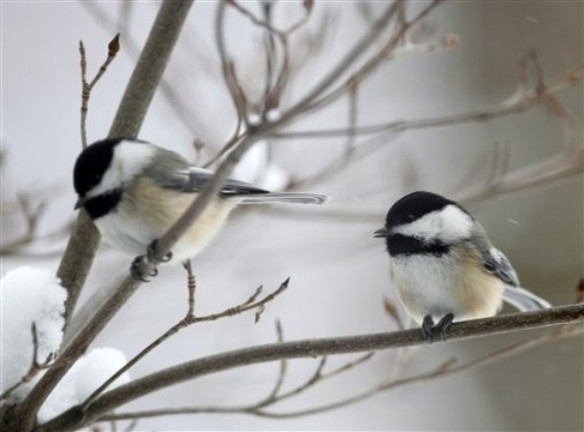Despite their fear of humans, some birds choose to rear their young right outside our door
For the past several years, Eastern phoebes have chosen to nest on our porch. This spring, they built their mud, moss, and grass nest on a ledge above the door. Thinking it was not a good place because of all the foot traffic, I removed the nest, only to have it reappear a few days later, so I let it stay. Mama phoebe would find out soon enough what it’s like when three barking dogs come charging out the door to defend us against any real or imagined four-legged invader that might happen to venture into the yard.
Despite all the coming and going, mama sat on her eggs, flying off when the door opened, and returning a few minutes later. I grew more confident that she wasn’t going to bail on the eggs, and soon five sets of eyes could be seen peering over the rim of the nest.
Once the nestlings were big enough to watch the activity below, they seemed mildly entertained, taking it all in as if completely normal. Unfazed by the noise and commotion, even the time a fox ventured into the yard, setting the dogs into complete pandemonium, the phoebes grew and thrived. A few days later, they left the nest to start their new life.

Three days before leaving the nest
While the vast majority of passerines prefer to secrete themselves away from people during the nesting season, others seem to seek out a nesting site close to human activity. Every spring, phoebes, wrens, bluebirds, and other birds that normally shy away from people choose to raise their offspring literally at our doorstep, begging the question: If birds have a basic distrust of humans, why, then, do they take the risk of raising their family where we could easily cause them harm?
My answer came while reading a passage by author and professor emeritus of biology at the University of Vermont Bernd Heinrich in The Nesting Season. Heinrich wrote, “There are almost no Eastern phoebes in the wild nesting on cliffs as they did before human settlement. Phoebes have learned to take advantage of human protectors, and those birds that build their nests in human structures are spectacularly successful.”
What Heinrich was getting at was that some birds sense that their offspring will be safer if located close to human activity, areas their natural predators tend to avoid. Somehow they are able to temporarily overcome their fear of humans, and use their hosts as a sort of insurance policy against the predation of their nests.
What I was witnessing was simply an adaptation of wild critters to help them survive. While the activity going on around the phoebes was no doubt an annoyance, it seemed a simple trade-off: put up with the pesky humans (and their dogs) for a short time in return for a greater chance of survival for their offspring.
For the rest of the year, the phoebes will live out their lives in the woods and fields around us. We will see them winging their way across the meadows and hear their calls, but rarely will they venture as close as they did during the nesting season. But it’s a pretty sure bet that these same birds or their offspring will be our house guests next spring, once again seeking the protection of humans.












